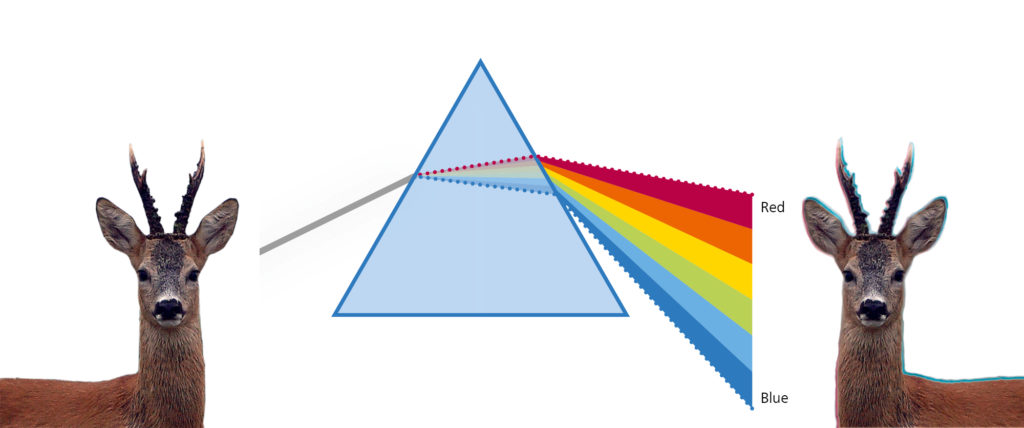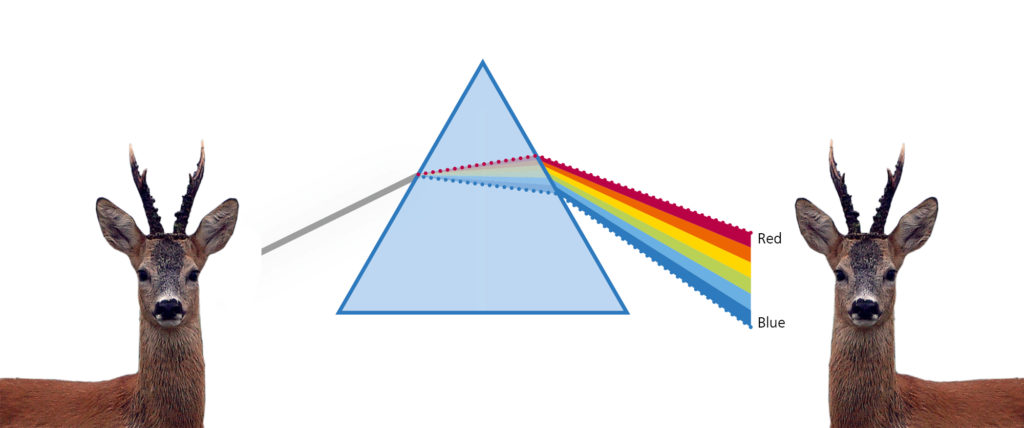Dispersion and Achromats
The different colors white light is composed of are deflected somewhat differently when they pass through a lens element or prism. This results in dispersion into individual spectral colors – this is how a rainbow is created, for example. With optical images, this dispersion results in unwanted visible color fringes around image contours and blurring.
Without the ZEISS FL Concept
With a standard glass, the light is spread out into the individual colors. Fringes occur that reduce the sharpness and contrast of the image. This can be reduced considerably by properly combining different types of glass. Known as achromats, this optical system is the current standard for most applications in observation and photography but still shows minor residual chromatic aberrations.

With the ZEISS FL Concept
A further reduction of this “secondary spectrum“ can be achieved through the use of special glass containing fluoride (fluoride ion) with so-called „abnormal partial dispersion, where the undesired color dispersion is considerably lower from the very beginning in comparsion with all other types of optical glass.
The SCHOTT FL glass minimizes the spread of the color spectrum. Contours are almost without color fringes and the color fidelity is higher. Fine details are clearly visible.

However, the glass material alone is not enough. Only the meaningful integration of these SCHOTT FL lens elements into matched optical systems, including the right coating technologies, results in the “FL concept“ that stands as a guarantee for outstanding image quality and brightness.
This concept demonstrates its full capabilities with very elaborate optical systems, particularly very large lens diameters, very high magnifications and very wide fields of view.
Therefore, only selected spotting scopes, binoculars and riflescopes – being the reference class for observation and hunting optics – bear the FL Seal of Quality only.